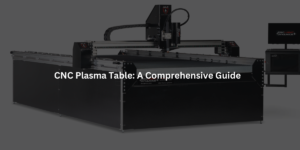Countersink holes are crucial in various fields, from woodworking and metalworking to complex engineering projects. A countersink hole is a conical hole cut into a material to allow the head of a countersunk fastener, such as a screw or bolt, to sit flush with or below the surface.
Understanding the countersink holes involves knowing the right tools and techniques for manufacturing, applications and benefits. The countersinking process requires precision, from choosing the correct countersink drill bit to ensuring the proper countersink angle.
This comprehensive guide will walk you through everything you need to know about:
- Countersink holes
- How to drill them
- The different types of countersink tools
- Applications
What are countersink holes?

A countersink hole is a conical depression created in a material to accommodate the head of a flat-head screw or rivet.
This allows the fastener to sit flush or slightly below the material’s surface, providing a clean and professional finish.
Check and Ensure the Countersink Angle is Correct
The standard countersink angle typically ranges around 82 degrees in the United States. At the same time, in other regions, it is 90 degrees or even 100 degrees depending on the specific application and the fastener design. Ensuring the correct countersink angle is vital for the screw head to sit flush with the surface of the material.
How to verify the countersink angle?

To verify the countersink angle, one can use several methods. One common approach is using a protractor or an angle gauge, which provides a direct measurement. For more precision, a digital angle finder can be used. Additionally, some countersink tools come with built-in angle adjustment features, allowing users to set and lock the desired angle before drilling.
What tools are used for precise angles?
Specialized tools like fluted countersink cutters are designed to achieve precise angles. These cutters have multiple cutting edges that ensure a clean and accurate cut, reducing the risk of over-countersinking or creating sharp edges that could weaken the material. Regularly checking the sharpness and condition of these tools is essential to maintain the correct countersink angle consistently.
Choosing the Right Tap for a Countersink Hole

Selecting the appropriate tap for a countersink hole is crucial to ensure that the threads are cut correctly and that the screw or bolt fits perfectly. A tap is a tool used to create internal threads in a hole, which allows fasteners like screws and bolts to grip securely.
There are various types of taps available, each designed for specific applications. For countersink holes, the choice of tap depends on factors such as the material being tapped, the desired thread type, and the size of the hole. Common types of taps include hand taps, spiral point taps, and spiral flute taps. Hand taps are generally used for manual tapping, while spiral point and spiral flute taps are more suitable for machine tapping.
When choosing the right tap, consider the following criteria:
Material
Different materials require different types of taps. For example, harder materials like steel may require taps made from high-speed steel (HSS) or cobalt, while softer materials like aluminum may work well with standard HSS taps.
Thread Type
Ensure that the tap matches the thread type of the fastener. Common thread types include UNC (Unified National Coarse), UNF (Unified National Fine), and metric threads.
Hole Size
The tap must match the diameter of the countersink hole. Using a tap that is too large or too small can result in poor thread quality and a weak fastener connection.
Tap Design

For countersink holes, it is often beneficial to use taps with a tapered lead, which helps guide the tap into the hole and reduces the risk of cross-threading.
Selecting the right tap ensures that the threads in the countersink hole are accurate and robust, providing a secure fit for the fastener and enhancing the overall integrity of the assembly.
How To Drill a Countersink Hole?

Drilling a countersink hole involves several steps, each requiring attention to detail to achieve the desired result. Here’s a step-by-step guide to help you drill a perfect countersink hole:
Mark the Hole Location
Begin by marking the exact spot where you want to drill the countersink hole. Use a center punch to create a small indentation, which helps guide the drill bit and prevents it from wandering.
Drill a Pilot Hole
Start by drilling a pilot hole using a smaller drill bit. The pilot hole diameter should be slightly smaller than the final countersink hole. This step helps ensure accuracy and reduces the risk of splitting the material.
Select the Correct Countersink Drill Bit
Choose a countersink drill bit that matches the desired countersink angle and the size of the screw head. There are various types of countersink bits, including single-flute, multi-flute, and adjustable bits.
Set the Drill Depth
Adjust the drill to the correct depth to ensure that the countersink hole is neither too shallow nor too deep. This can be done using a depth stop or by carefully measuring and marking the desired depth on the drill bit.
Drill the Countersink Hole
Position the drill bit over the pilot hole and begin drilling at a slow speed. Gradually increase the speed as the bit starts to cut into the material. Maintain steady pressure and ensure that the drill is perpendicular to the surface to achieve a clean cut.
Check the Fit
After drilling, test the fit by inserting the screw or bolt into the countersink hole. The screw head should sit flush with or slightly below the surface of the material. If necessary, make minor adjustments to the depth or angle.
Finish the Hole

Clean up any debris or burrs around the hole using a deburring tool or sandpaper. This step ensures a smooth finish and prevents any sharp edges that could interfere with the screw head.
By following these steps, you can drill precise countersink holes that provide a professional finish and enhance the strength and durability of your projects.
Applications and Uses of Countersink Holes
Countersink holes are widely used in various industries due to their functional and aesthetic benefits. Here are some common applications and uses:
Woodworking
In woodworking, countersink holes are essential for creating smooth surfaces where screw heads do not protrude. This not only improves the appearance of the finished piece but also prevents the screws from catching on other objects or clothing.
Metalworking
In metalworking, countersink holes are used to create flush surfaces on metal parts, which is crucial for assembling components that need to fit together tightly without gaps. This is particularly important in aerospace, automotive, and machinery industries.
Furniture Assembly
Countersink holes are commonly used in furniture assembly to hide screw heads and create a clean, professional look. This technique is especially useful for visible joints and surfaces.
Construction
In construction, countersink holes are used to secure fixtures and fittings without leaving protruding screw heads that could pose safety hazards or interfere with other materials.
Electronics
In electronics, countersink holes are used to mount components on circuit boards and enclosures, ensuring that screws do not interfere with other parts and providing a secure and stable connection.
Marine Applications
Countersink holes are used in marine applications to create watertight seals around fasteners, preventing water ingress and corrosion.
By understanding the various applications and benefits of countersink holes, you can make informed decisions about when and how to use them in your projects.
This introduction and initial sections provide a comprehensive overview of countersink holes, including their importance, the correct technique for drilling them, and their various applications.
The following sections will delve deeper into specific aspects, such as choosing the right countersink drill bit, understanding the callout symbol, and comparing countersink holes to counterbore holes.
Select the Correct Countersink Drill Bit
Selecting the right countersink drill bit is essential for achieving a clean, precise countersink hole that allows the screw head to sit flush with the material’s surface. Here are some key considerations:
Material Compatibility
Different drill bits are designed for specific materials. For instance, high-speed steel (HSS) bits are ideal for wood and soft metals, while cobalt or carbide-tipped bits are better suited for harder metals like stainless steel.
Countersink Angle
The angle of the countersink bit should match the angle of the screw head. Common countersink angles include 82°, 90°, and 100°. Ensuring the correct angle helps the screw sit flush without gaps.
Types Of Bit Design Types
There are several types of countersink bits:
- Single-Flute Bits: These are best for softer materials and provide a smooth finish.
- Multi-Flute Bits: Ideal for harder materials, they offer more cutting edges for a cleaner cut.
- Adjustable Bits: These allow for changing the depth and angle of the countersink, offering versatility for different projects.
Size and Diameter

The diameter of the countersink drill bit should match the diameter of the screw head. Using a bit with the correct diameter ensures the screw head sits flush with the material surface.
Pilot Hole
Some countersink bits come with an integrated pilot drill bit, which helps guide the countersink bit and ensures accuracy. If the bit doesn’t include a pilot drill, drilling a pilot hole separately can help achieve a better result.
Choosing the right countersink drill bit ensures that the countersink hole is accurate and that the screw head sits flush with the material, providing both a functional and aesthetically pleasing finish.
Countersink Holes vs. Counterbore Holes

Understanding the difference between countersink and counterbore holes is essential for selecting the right type for your project. Both serve to create a recess for screw heads, but they differ in design and application.
Definition Of Countersink Holes
These are conical holes that allow the screw head to sit flush with or below the surface of the material. The hole tapers inwards at a specific angle, typically 82° or 90°.
Definition Of Counterbore Holes
These are cylindrical holes that create a flat-bottomed recess for the screw head. The screw head sits completely below the surface, and a pilot hole continues through the material for the screw shaft.
Applications For Countersink Holes
Commonly used in woodworking and metalworking, where a flush finish is required. Ideal for applications where the screw head should be hidden or sit flush to prevent snagging.
Application For Counterbore Holes
Often used in applications requiring a strong, flat bearing surface for the screw head, such as in machinery and structural components.
Visual Differences
A countersink hole has a conical shape that matches the angled screw head, while a counterbore hole is cylindrical with a flat bottom, accommodating a hex or cap screw head.
Strength and Aesthetics
Countersink Holes: Provide a cleaner look and are easier to conceal, making them ideal for decorative or finished surfaces.
Counterbore Holes: Offer greater holding strength as the screw head sits on a flat surface, distributing the load more evenly.
Tools Used
- Countersink Holes: Require a countersink bit with the appropriate angle.
- Counterbore Holes: Use a counterbore bit, often with an integrated pilot bit for precise alignment.
Choosing between countersink and counterbore holes depends on the specific requirements of your project, including the type of screw, desired finish, and load-bearing needs.
What is the Callout Symbol of a Countersink Hole?
The callout symbol for a countersink hole is a standardized notation used in engineering drawings to specify the details of the countersink. Understanding this symbol is crucial for accurately interpreting and creating technical drawings.
Symbol Description
The callout symbol for a countersink hole typically consists of a “V” shape followed by the diameter and angle of the countersink. For example, a callout might look like this: “⌴ 82° ⌀10”.
Components of the Symbol
- “⌴”: Represents the countersink feature.
- 82°: Indicates the angle of the countersink.
- ⌀10: Specifies the diameter of the countersink at the material surface.
Additional Details
Sometimes, the depth of the countersink may also be specified, especially if a precise depth is required for the application. This is usually indicated by a “D” followed by the depth measurement, e.g., “D3”.
- Importance in Technical Drawings: The callout symbol provides all necessary information for machinists and engineers to create the countersink hole accurately. It eliminates ambiguity and ensures that the part meets design specifications.
- Reading the Symbol: When interpreting the callout symbol, always check the specified angle and diameter to ensure that the correct countersink bit is used. Double-checking these details helps avoid errors in manufacturing.
By understanding the callout symbol for a countersink hole, you can ensure accurate communication of design requirements and achieve precise results in your projects.
Adjust the Drill to the Right Depth

Adjusting the drill to the correct depth is crucial for creating a countersink hole that is neither too shallow nor too deep. Proper depth adjustment ensures that the screw head sits flush with the material surface.
Use a Depth Stop
Many drills come with a depth stop attachment, which allows you to set a precise drilling depth. Adjust the depth stop to match the desired countersink depth before starting the drilling process.
Mark the Drill Bit
If a depth stop is not available, you can mark the desired depth on the drill bit using tape or a marker. This visual guide helps ensure consistent depth throughout the drilling process.
Drill Press
For more precise depth control, consider using a drill press. A drill press allows for exact depth adjustments and provides greater stability, reducing the risk of over-drilling.
Adjustable Countersink Bits
Some countersink bits come with adjustable depth settings. These bits have a collar or stop that can be set to the desired depth, providing consistent results with each hole.
Test on Scrap Material
Before drilling the final piece, test the depth setting on a scrap piece of the same material. This practice run helps verify that the depth is correct and allows for any necessary adjustments.
Monitor Drilling Progress
As you drill, periodically check the depth to ensure accuracy. Stopping to measure the depth with a caliper or ruler can help prevent over-drilling.
Properly adjusting the drill to the correct depth is essential for achieving a countersink hole that meets design specifications and provides a professional finish.
When to Use a Countersink?
Knowing when to use a countersink is crucial for achieving the desired finish and functionality in your projects. Here are some common scenarios where countersinking is beneficial:
Aesthetic Finish
Use a countersink when you want the screw head to sit flush with or below the surface of the material. This is particularly important for visible surfaces where a smooth, clean appearance is desired.
Preventing Snagging
In applications where protruding screw heads could catch on clothing or other objects, countersinking helps create a safer, snag-free surface.
Load Distribution
Countersinking helps distribute the load of the screw head more evenly across the material, reducing the risk of damage or splitting, especially in softer materials like wood.
Aligning Components
When joining multiple components, countersinking ensures that screws do not interfere with the alignment of parts, providing a more precise and stable assembly.
Improving Durability
In environments where screws are subjected to vibration or movement, countersinking can help prevent screws from loosening over time by providing a more secure fit.
Machinery and Structural Applications
In machinery and structural applications, countersinking is often used to create a flat surface for fasteners, ensuring that they do not protrude and interfere with other components.
Waterproofing
In marine and outdoor applications, countersinking allows for the use of sealants around the screw head, helping to create watertight seals and prevent corrosion.
By understanding when to use a countersink, you can enhance the functionality, safety, and appearance of your projects.
Countersink Hole Size Charts
Countersink hole size charts are essential tools for selecting the correct countersink bit and ensuring that the screw head fits properly. These charts provide standardized dimensions for various screw sizes and materials.
Importance of Size Charts
Using a size chart ensures that the countersink hole is appropriately sized for the screw head, providing a flush fit and avoiding issues like over-countersinking or under-countersinking.
Countersink holes Chart
Size charts typically list the screw size, the corresponding countersink diameter, and the countersink angle. Some charts may also include pilot hole diameters for convenience.

Metric and Imperial Sizes
Ensure that the size chart matches the measurement system (metric or imperial) used for your project. Using the wrong chart can lead to incorrect sizing and poor fit.
Material Considerations
Some size charts may provide recommendations based on material type, as different materials may require slight adjustments to countersink dimensions.
Using countersink hole size charts helps achieve precise and consistent results, ensuring that screws fit properly and provide a professional finish.
Types of Countersink Tools and Bits
There are various types of countersink tools and bits, each designed for specific applications and materials. Understanding the different types helps in selecting the right tool for your project.

Single-Flute Countersink Bits
These have a single cutting edge and are ideal for softer materials like wood and plastic. They provide a smooth finish and are less likely to chatter.
Multi-Flute Countersink Bits
With multiple cutting edges, these bits are suitable for harder materials like metal. They offer a cleaner cut and better control, reducing the risk of burrs.

Adjustable Countersink Bits
These bits allow for adjusting the depth and angle of the countersink, providing versatility for different screw sizes and materials. They often come with a depth stop for consistent results.
Integrated Pilot Bits
Some countersink bits include an integrated pilot drill bit, which helps guide the countersink and ensures accuracy. These are especially useful for beginners.
Deburring Tools
Used to clean up the edges of the countersink hole, deburring tools remove any burrs or rough edges left after drilling, ensuring a smooth finish.
Countersink Sets
These sets typically include multiple bits of different sizes and angles, providing a range of options for various applications. They are a convenient choice for professionals who work with different materials and screw sizes.
Combination Of Countersink and Drill Bits
These tools combine a countersink bit with a drill bit, allowing for drilling the pilot hole and countersinking in one step. They save time and ensure precision.

Countersink FAQs
What is a countersink hole?
A countersink hole is a conical depression created in a material around a hole to accommodate the head of a flat-head screw or rivet. It allows the fastener to sit flush or below the surface.
How do you size a countersink hole?
The countersink hole should be sized to match the head of the fastener. The angle of the countersink should also match the angle of the screw head. Common angles are 82 degrees for imperial screws and 90 degrees for metric screws.
How to make a perfect countersink hole?
- Drill a pilot hole for the screw shank.
- Choose a countersink bit with the correct angle and diameter.
- Securely clamp the workpiece.
- Align the countersink bit with the pilot hole.
- Slowly drill the countersink hole to the desired depth.
- Inspect the hole for accuracy and smoothness.
What is the difference between a countersink and a countersunk?
- Countersink is a noun referring to the conical hole itself or the tool used to create it.
- Countersunk is an adjective describing a hole that has been countersunk or a screw designed to fit into a countersunk hole.
How do you drill a countersink hole without a countersink bit?
While it’s possible to create a crude countersink using a drill bit, it’s difficult to achieve the correct angle and shape. A countersink bit is specifically designed for this purpose and produces better results.
What is the difference between countersink and counterbore?
- Countersink is a conical hole for a flat-head screw.
- Counterbore is a cylindrical hole with a flat bottom, often used for socket head screws.
What is the purpose of countersinking?
Countersinking provides a neat and flush finish by allowing the screw head to sit below the surface of the material. It also prevents snags and injuries caused by protruding screw heads.
How do you countersink with a drill?
Use a countersink bit in a drill to create the conical hole. Ensure the bit is securely clamped and the workpiece is clamped firmly.
How is countersinking done?
Countersinking is done by drilling a conical hole around a pilot hole to accommodate the head of a flat-head screw or rivet.
What is the purpose of a countersink hole?
The purpose of a countersink hole is to provide a recess for the head of a flat-head screw or rivet, resulting in a flush or below-surface finish.
What does a countersink hole look like?
A countersink hole is a conical depression with a specific angle, typically 82 or 90 degrees, depending on the screw type.
Why do you need a countersink?
A countersink creates the proper shape for a flat-head screw to sit flush or below the surface, improving appearance and safety.
Do you drill before or after countersink?
Drill the pilot hole for the screw shank before countersinking.
How do you countersink a hole without a countersink?
It’s challenging to accurately countersink without a dedicated bit. However, you can try using a drill bit with a ground-down tip to create a rough approximation.
Why do you countersink holes?
Countersinking improves the appearance of the finished product, prevents snags, and reduces the risk of injury from protruding screw heads.
Is countersinking necessary?
Countersinking is not strictly necessary, but it significantly enhances the overall appearance and safety of the finished product.
What is the purpose of countersinking screws?
Countersinking screws creates a flush or below-surface finish, improving aesthetics and safety.
What is a countersunk screw?
A countersunk screw has a conical head designed to fit into a countersink hole, allowing it to sit flush or below the surface.
Should I countersink screws?
If you want a clean, professional finish and want to avoid the risk of snags or injuries, countersinking screws is recommended.
How to countersink a screw without a countersink bit?
While not ideal, you can try grinding the tip of a drill bit to create a rough countersink. However, a dedicated countersink bit is strongly recommended for accurate results.





